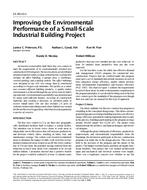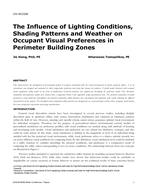Computer simulation methods were used to compare two different strategies for responding to thermal sensation complaints in buildings. The baseline strategy involved changing the space temperature setpoint in the appropriate direction and leaving it there until another complaint occurred. The alternative strategy involved changing the setpoint in the appropriate direction for a finite time and then resetting it to a value expected to produce the fewest complaints on average. A complaint model recently proposed by Federspiel (2000) was used to simulate complaint behavior. A building heat transfer model that included a multi-layer wall, heat accumulation by furnishings, meteorological weather data, time-varying internal disturbances, temperature sensor dynamics, and a proportional plus integral (PI) temperature controller was used to model the building. A grid search was used to determine the optimal values of the setpoint change and duration for the resetting strategy. The optimization indicates that setpoint changes greater than 2°F and longer than two hours are most effective. A comparison of the resetting strategy and the base-line strategy shows that resetting the setpoint significantly lowers both the complaint rate and the complaint recovery period.
Units: I-P
Citation: ASHRAE Transactions, vol. 108, pt. 1, Atlantic City, 2002
Product Details
- Published:
- 2002
- Number of Pages:
- 6
- File Size:
- 1 file , 230 KB
- Product Code(s):
- D-6976


